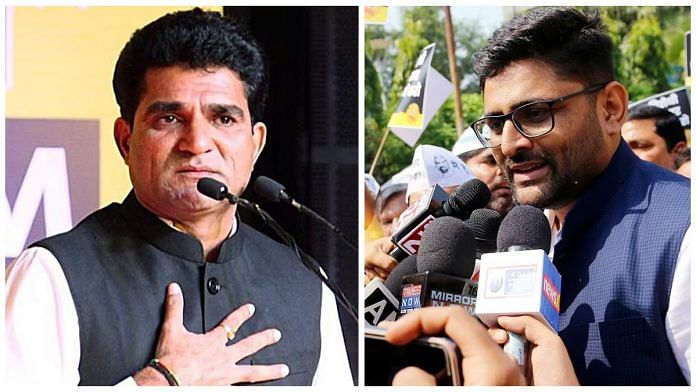New Delhi: Having won four seats and leading on one more, the Aam Aadmi Party (AAP) has made its electoral debut in the Gujarat Legislative Assembly, but two of its high-profile candidates including its CM face have lost to BJP candidates by a broad margin.
The AAP’s chief ministerial candidate for Gujarat, former TV presenter Isudan Gadhvi, and the party’s state president Gopal Italia, both lost from their respective seats, Khambalia and Katargam.
According to the Election Commission of India (ECI), BJP candidate from Khambalia in Saurashtra, Ayar Mulubhai Hardasbhai Bera, secured 77,834 votes against AAP’s CM face Gadhvi with 59,089 votes. In Katargam, BJP’s Vinodbhai Amarshibhai Moradiya won with 1,20,505 votes against AAP’s state chief Italia who secured 55,878 votes.
Both Gadhvi and Italia had campaigned extensively across the state. Gadhvi had even predicted that AAP would win 100 of 182 seats in the state.
According to ECI, BJP candidates have won 142 seats and are leading on 14 seats in Gujarat as of 6.20 pm, while the AAP has won five seats. The Congress has secured victory on 16 seats and is leading on one.
The BJP’s vote share stands at around 52.5 per cent, up from 49 per cent in 2017, while that of the Congress seems to have dipped from 41.4 per cent in 2017 to 27 per cent in 2022 as of 6.20 pm Thursday.
The AAP, meanwhile, has managed a vote share of 12.9 per cent so far.
In the run-up to the campaign, the AAP had — as they did in Punjab — sought recommendations from the public to decide who would be their chief ministerial candidate. Kejriwal claimed the party received 16 lakh responses, of which 73 per cent chose Gadhvi to lead the party in the state.
AAP’s campaign in Gujarat turned the assembly election into a triangular contest with initial trends suggesting that candidates fielded by the party may have dented the Congress’s prospects on some seats. The Kejriwal-led party made its foray into Gujarat during the municipal elections last year, securing 28 per cent of votes in Surat, 21 per cent in Gandhinagar, and 17 per cent in Rajkot.
(Edited by Amratansh Arora)
Also Read: What explains three different outcomes—Delhi to Gujarat to Himachal






